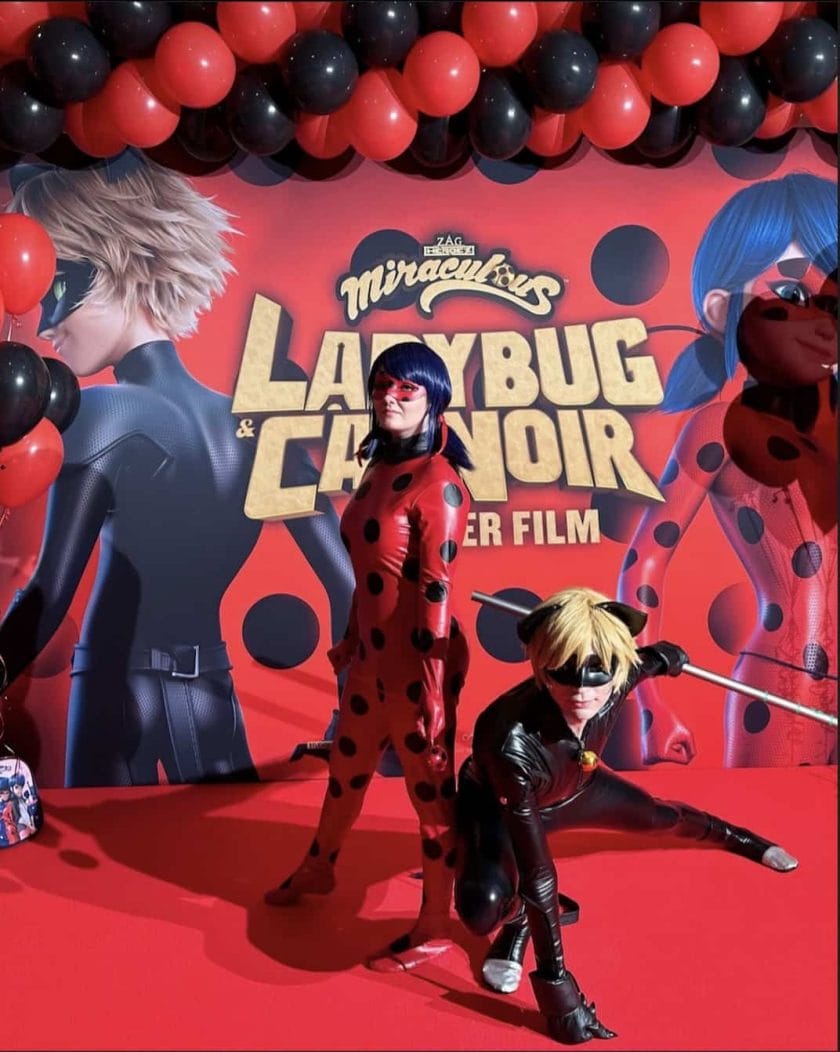Author
-

German Cosplayer from Nürnberg, professional Model & Walkingact for events & content creator.
https://images-wixmp-ed30a86b8c4ca887773594c2.wixmp.com/f/fa104328-c43e-4bd4-ab70-7911e23a1bd3/d1ga8pw-f834830e-342c-47ea-b904-ee0fefc9bdb5.jpg?token=eyJ0eXAiOiJKV1QiLCJhbGciOiJIUzI1NiJ9.eyJzdWIiOiJ1cm46YXBwOjdlMGQxODg5ODIyNjQzNzNhNWYwZDQxNWVhMGQyNmUwIiwiaXNzIjoidXJuOmFwcDo3ZTBkMTg4OTgyMjY0MzczYTVmMGQ0MTVlYTBkMjZlMCIsIm9iaiI6W1t7InBhdGgiOiJcL2ZcL2ZhMTA0MzI4LWM0M2UtNGJkNC1hYjcwLTc5MTFlMjNhMWJkM1wvZDFnYThwdy1mODM0ODMwZS0zNDJjLTQ3ZWEtYjkwNC1lZTBmZWZjOWJkYjUuanBnIn1dXSwiYXVkIjpbInVybjpzZXJ2aWNlOmZpbGUuZG93bmxvYWQiXX0.CsnSHVzksSWAvbn87Emh1QEQHGpvz-6x6rtB8q91ABA
Common Materials Used to Make a Cosplay Tail
When it comes to making a cosplay tail, there are a variety of materials you can choose from. The material you select will depend on the specific look and feel you want to achieve for your character. Here are some common materials used for making cosplay tails:
Faux Fur:
Faux fur is a popular choice for creating realistic-looking animal tails. It comes in a wide range of colors and textures, allowing you to find the perfect match for your character. Faux fur is relatively easy to work with and can be sewn or glued onto a base fabric.
Foam:
Foam is often used as a base material for creating fantasy creature tails. It can be shaped and sculpted into various forms, allowing for more creative designs. Foam can be covered with fabric or painted to achieve the desired look.
Feathers:
Feathers are commonly used for bird or feathered creature tails. They can be attached individually or in clusters to create a fluffy and dynamic appearance. Feathers come in different sizes and colors, giving you plenty of options to customize your tail.
Wire:
Wire is often used as a structural element in cosplay tails. It helps give the tail shape and stability, especially for longer or more elaborate designs. Wire can be wrapped with fabric or other materials to create the desired texture.
List of common materials:
- Faux fur
- Foam
- Feathers
- Wire
These are just a few examples of the many materials you can use to make a cosplay tail. Don’t be afraid to get creative and experiment with different materials to achieve the perfect look for your character!
Determining the Appropriate Length and Size for a Cosplay Tail
Factors to Consider
Determining the appropriate length and size for a cosplay tail is crucial in achieving an accurate representation of your character. Several factors should be taken into consideration when deciding on the length and size of your tail. First, consider the proportions of your character. Look at reference images or artwork to determine the relative size of their tail compared to their body. Additionally, think about the practicality of wearing a longer or larger tail. Will it hinder movement or become cumbersome? Finally, consider your own comfort level. Some cosplayers prefer shorter tails that are easier to manage, while others enjoy the dramatic effect of a long and flowing tail.
Measuring and Sizing
To accurately determine the appropriate length for your cosplay tail, measure from where you plan to attach it (such as at the base of your spine) to where you want it to end. This measurement will vary depending on your character’s design and personal preference. As for sizing, keep in mind that thicker materials may require more fabric or stuffing to achieve the desired volume and shape. Experiment with different sizes by creating mock-ups or using wire frames until you find the perfect balance between accuracy and practicality.
Tail Length Checklist:
- Consider character proportions
- Think about practicality and movement
- Take personal comfort into account
- Measure from attachment point to desired endpoint
- Experiment with different sizes using mock-ups or wire frames
Tail Size Checklist:
- Choose materials based on desired volume and shape
- Consider thickness when determining required fabric or stuffing
- Experiment with different sizes to achieve the desired effect
- Balance accuracy with practicality
Tools and Equipment Needed to Make a Cosplay Tail
Sewing Tools:
To make a cosplay tail, you will need basic sewing tools such as scissors, pins, sewing needles, and a sewing machine (optional but recommended for efficiency). These tools will help you cut and shape the fabric, secure it with pins, and stitch it together.
Filling Materials:
Depending on the desired size and shape of your cosplay tail, you will need filling materials such as polyester fiberfill or foam. These materials will give your tail volume and structure. You can also use wire or pipe cleaners to add flexibility to the tail.
Fabric and Notions:
Choose a fabric that matches your character’s design and is suitable for the desired texture of your tail. Faux fur is commonly used for animal-themed tails, while fabrics like satin or organza work well for fantasy creature tails. Additionally, you may need other notions such as thread in matching colors, elastic bands or straps for attachment purposes, and any decorative elements like ribbons or beads.
Optional Tools:
- A hot glue gun can be useful for attaching small details or embellishments to your cosplay tail.
- If you prefer hand-sewing over using a machine, having thimbles or finger guards can protect your fingers from getting pricked by needles.
- A seam ripper is handy for undoing stitches if needed.
Overall, having these tools and equipment ready before starting your cosplay tail project will make the process smoother and more enjoyable.
Techniques for Creating a Realistic Texture on a Cosplay Tail
Using Faux Fur and Airbrushing
One popular technique for achieving a realistic texture on a cosplay tail is by using faux fur and airbrushing. Start by selecting high-quality faux fur that closely matches the desired texture of your character’s tail. Trim the fur to the appropriate length and shape, ensuring it flows naturally. Next, use an airbrush to add depth and dimension to the fur. Begin with lighter shades and gradually build up darker colors to create shadows and highlights. This technique allows you to mimic the natural variations in color found in real animal fur, resulting in a more realistic appearance.
Adding Detail with Fabric Paint or Embroidery
If you prefer a more hands-on approach, consider using fabric paint or embroidery techniques to add texture to your cosplay tail. Fabric paint can be applied directly onto the faux fur to create patterns or simulate scales, feathers, or other textures. Alternatively, you can use embroidery thread to stitch intricate designs onto the tail, adding depth and detail. Experiment with different stitches and colors to achieve the desired effect. This method requires patience and precision but can result in stunningly realistic texture.
Securely Attaching a Cosplay Tail to Your Costume or Clothing
Sewing Loops or Straps onto the Tail
To securely attach your cosplay tail to your costume or clothing, consider sewing loops or straps onto the base of the tail. Cut strips of fabric that match your costume’s color and material, then sew them onto the base of the tail at regular intervals. These loops can then be used to slide belt loops through or attach clips for easy attachment. For added security, reinforce these attachment points with extra stitching.
Using Hook-and-Loop Fasteners
If you prefer a removable option, using hook-and-loop fasteners can be an effective way to attach your cosplay tail. Sew one side of the fastener onto the base of the tail and the corresponding side onto your costume or clothing. This allows for easy attachment and removal without damaging either the tail or your outfit. Make sure to use strong adhesive or stitching to ensure the fasteners stay securely in place during wear.
Wire or Elastic Attachments
For tails that require more flexibility or movement, consider using wire or elastic attachments. Sew a thin wire along the length of the tail, allowing it to bend and hold its shape. Attach the wire to your costume with loops or hooks for stability. Alternatively, sew elastic bands into the base of the tail and secure them around your waist or hips for a comfortable and secure fit.
Step-by-Step Instructions for Sewing a Cosplay Tail from Scratch
Gathering Materials and Tools
To sew a cosplay tail from scratch, you will need the following materials: fabric of your choice, matching thread, stuffing or batting, a sewing machine or needle and thread, scissors, pins, and a tail pattern. Start by selecting a fabric that matches the color and texture of your character’s tail. Then, print or draw a tail pattern that suits your desired length and shape.
Creating the Tail Base
Once you have gathered all the necessary materials, lay out your fabric on a flat surface. Place the tail pattern on top of the fabric and secure it with pins. Carefully cut out two identical pieces of fabric using the pattern as a guide. Next, place the two fabric pieces together with their right sides facing each other. Pin them together along the edges to keep them in place while sewing.
Using either a sewing machine or hand stitching, sew along the pinned edges, leaving an opening at one end of the tail for turning it right side out later. Trim any excess fabric around the edges and clip small notches along curved areas to help create smooth curves when turned right side out.
Stuffing and Finishing
After sewing all around the edges except for the opening, carefully turn the tail right side out through the opening. Use a blunt object such as a chopstick or pencil to gently push out any corners or curves for a clean finish. Once fully turned right side out, stuff the tail with batting or stuffing until it reaches your desired level of firmness.
Finally, hand stitch or use a ladder stitch to close up the opening neatly. Make sure to secure any loose threads before finishing. Your cosplay tail is now ready to be attached to your costume using safety pins or by sewing it directly onto the garment.
Alternative Methods for Making a Cosplay Tail without Sewing
Creating a Tail with Foam and Fabric
If you prefer not to sew, you can create a cosplay tail using foam and fabric. Start by shaping the foam into the desired tail shape, ensuring it is lightweight and flexible. Cover the foam with fabric of your choice, securing it with adhesive or hot glue. Trim any excess fabric and add additional details such as scales or fur using craft materials like paint or faux fur.
Using Wire and Fabric to Create a Poseable Tail
Another alternative method is to create a poseable tail using wire and fabric. Begin by bending wire into the desired tail shape, leaving extra length at the base for attachment. Cover the wire with fabric, securing it tightly with adhesive or sewing. To make the tail poseable, insert smaller wires within each section of the tail before covering them with fabric. This will allow you to bend and position the tail as desired.
Remember to consider your character’s design and level of mobility required when choosing which alternative method to use for making your cosplay tail without sewing.
Creative Ways to Add Details and Embellishments to a Cosplay Tail
Using Fabric Paints and Dyes
One creative way to add details and embellishments to a cosplay tail is by using fabric paints and dyes. These can be used to create intricate patterns, gradients, or even realistic textures on the tail. Experimenting with different painting techniques such as stippling, sponging, or splattering can result in unique and eye-catching designs. Additionally, fabric dyes can be used to achieve vibrant colors or subtle shading.
Adding Accessories and Attachments
To further enhance the look of a cosplay tail, consider adding accessories and attachments. This could include attaching faux fur trim along the edges of the tail for added texture, sewing on decorative ribbons or lace, or even incorporating small bells or charms that match your character’s aesthetic. These additional elements can help bring your cosplay tail to life and make it stand out.
Creating Dimension with Appliques
An effective way to add depth and dimension to a cosplay tail is by using appliques. Appliques are pre-made fabric patches that can be sewn or glued onto the tail. They come in various shapes, sizes, and designs, allowing for endless possibilities in terms of customization. Whether it’s adding scales for a dragon-inspired tail or floral motifs for a whimsical creature, appliques provide an easy way to incorporate intricate details.
Using LED Lights for an Illuminated Effect
If you want to take your cosplay tail to the next level, consider incorporating LED lights for an illuminated effect. Sewing small battery-powered LED lights into the interior of the tail can create a stunning visual impact at conventions or events. You can choose lights in colors that match your character’s design or opt for color-changing LEDs to add a dynamic element to your cosplay tail.
Ensuring Accurate Color Matching for Your Character’s Design on the Tail
Color Swatching and Comparison
One crucial aspect of creating a cosplay tail is ensuring accurate color matching to your character’s design. Start by obtaining color swatches or reference images of your character’s colors. Compare these swatches to available fabric options, either in-store or online, to find the closest match. It can be helpful to bring the swatches with you when shopping for fabrics to ensure an accurate comparison.
Utilizing Color Theory Principles
Understanding color theory principles can also aid in achieving accurate color matching. Familiarize yourself with concepts such as complementary colors, analogous colors, and shades and tints. By applying these principles, you can create harmonious color combinations that closely resemble your character’s design on the tail. Additionally, consider how lighting conditions may affect the perception of colors and adjust accordingly.
Dyeing Fabrics for Custom Colors
If you cannot find fabric in the exact shade needed for your cosplay tail, consider dyeing white or light-colored fabrics to achieve custom colors. Use fabric dyes specifically formulated for the type of fabric you are using and follow the instructions carefully. It may be necessary to experiment with different dye concentrations and techniques to achieve the desired color accurately.
Using Color-Matching Tools and Apps
In today’s digital age, there are various tools and apps available that can assist in accurate color matching. Some apps allow you to capture colors from real-life objects using your smartphone camera and provide corresponding RGB or hex codes. These codes can then be used when selecting fabrics or purchasing colored materials online, ensuring a precise match to your character’s design.
Considerations when Choosing Materials for Animal-themed vs. Fantasy Creature Tails
Animal-themed Tails
When choosing materials for animal-themed cosplay tails, it is important to consider the specific animal you are trying to portray. Research the characteristics of the animal’s tail and choose materials that can replicate its texture and appearance. For example, if you are making a fox tail, faux fur would be a suitable choice as it mimics the softness and thickness of a real fox’s tail. Additionally, consider the color and pattern of the animal’s tail and select materials that can accurately recreate those features.
Fantasy Creature Tails
Fantasy creature tails offer more creative freedom in terms of materials. Depending on the design and concept of your fantasy creature, you may opt for unconventional materials such as feathers, scales, or even LED lights to bring your tail to life. Consider the overall aesthetic you want to achieve and choose materials that align with that vision. Experiment with different textures and colors to create a unique and eye-catching cosplay tail.
Materials List:
– Faux fur
– Feathers
– Scales
– LED lights
– Fabric paint
– Ribbons or decorative trims
When selecting materials for both animal-themed and fantasy creature tails, it is essential to prioritize comfort and durability. Ensure that the chosen materials are safe to wear for extended periods without causing irritation or discomfort. Test different fabrics against your skin before committing to them for your cosplay tail. Additionally, consider how easy it will be to clean and maintain the chosen materials, as cosplay tails may require regular washing or spot cleaning.
Researching tutorials or seeking advice from experienced cosplayers can also provide valuable insights into suitable material choices for specific characters or designs. Ultimately, selecting appropriate materials will greatly enhance the overall look and feel of your cosplay tail.
(Note: The number of paragraphs and details can be adjusted based on the desired length and depth of information.)
Caring for and Maintaining Your Completed Cosplay Tail
Once you have completed your cosplay tail, it is important to properly care for and maintain it to ensure its longevity. Here are some tips on how to keep your cosplay tail looking its best:
1. Cleaning
To clean your cosplay tail, start by checking the materials used in its construction. If the tail is made of fabric, you can usually hand wash it using a mild detergent and cold water. Avoid using bleach or harsh chemicals as they may damage the fabric. For tails made of faux fur or other delicate materials, spot cleaning with a damp cloth is often sufficient.
After cleaning, allow the tail to air dry completely before storing or wearing it again. This will help prevent any mold or mildew from forming.
2. Storage
When not in use, it is important to store your cosplay tail properly to avoid any damage. Consider investing in a dedicated storage container or bag specifically designed for costume accessories like tails. Make sure the container is clean and dry before placing your tail inside.
If possible, store your cosplay tail in a cool, dry place away from direct sunlight. This will help prevent fading or discoloration over time. Avoid folding or squishing the tail too tightly as this can cause creases that may be difficult to remove.
Online Resources and Tutorials for Beginners Making Their First Cosplay Tail
If you’re new to making cosplay tails and need some guidance, there are plenty of online resources and tutorials available to help you get started:
1. YouTube Channels
YouTube is a great platform for finding step-by-step tutorials on making cosplay tails. Some popular channels include “Kamui Cosplay,” “Punished Props Academy,” and “Evil Ted Smith.” These channels offer a wide range of tutorials for beginners, covering everything from basic tail construction to more advanced techniques.
2. Online Communities and Forums
Joining online communities and forums dedicated to cosplay can also be a valuable resource for beginners. Websites like Cosplay.com and Reddit’s r/cosplay provide platforms for cosplayers to share their knowledge, ask questions, and seek advice. Browse through these platforms to find threads or posts specifically discussing cosplay tail construction.
Additionally, many experienced cosplayers are active on social media platforms such as Instagram and Twitter. Follow popular cosplayers in your area of interest to gain inspiration and access to their helpful tips and tricks.
Safety Precautions and Guidelines when Wearing a Cosplay Tail at Conventions or Events
When wearing a cosplay tail at conventions or events, it is important to prioritize safety and follow certain guidelines:
1. Avoid Tripping Hazards
Make sure your cosplay tail does not pose a tripping hazard for yourself or others. Consider the length of the tail and the space you will be navigating in. If necessary, secure the tail higher up on your body using straps or clips to keep it out of the way.
a) Securing the Tail
If your tail is detachable, consider attaching it to a belt or harness instead of directly onto your costume. This will make it easier to remove if needed and reduce the risk of accidentally snagging or pulling on it.
2. Be Mindful of Others
Avoid swinging or flinging your cosplay tail around in crowded areas where you may accidentally hit someone. Be aware of your surroundings and take care not to inconvenience or harm others with your tail.
3. Comfort and Mobility
Ensure that wearing your cosplay tail does not restrict your movement or cause discomfort. Test it out before the event to make any necessary adjustments, such as adding padding or adjusting straps, to ensure a comfortable fit.
Time Required to Make a Cosplay Tail and Factors Affecting the Timeframe
The time required to make a cosplay tail can vary depending on several factors. Here are some factors that can affect the timeframe:
1. Complexity of Design
A more intricate design with multiple colors, patterns, or additional features like spikes or LED lights will likely require more time to construct compared to a simpler design.
2. Skill Level
Your skill level in sewing and crafting will also play a role in the time needed to complete a cosplay tail. Beginners may need more time as they learn new techniques, while experienced cosplayers may be able to complete the project more quickly.
3. Availability of Materials
If you already have all the necessary materials readily available, it can significantly reduce the time needed for gathering supplies. However, if you need to order specific materials online or visit multiple stores, it may add extra time to the overall process.
a) Planning and Research
Taking the time to plan and research before starting your cosplay tail can also affect the timeframe. Proper planning helps avoid mistakes and allows for efficient execution of each step.
Overall, the time required for making a cosplay tail can range from a few hours for simpler designs to several days or even weeks for more complex projects. It is important to give yourself enough time and not rush through the process to ensure a high-quality end result.
In conclusion, making a cosplay tail is an exciting and creative process that allows you to bring your favorite characters to life. By following the steps outlined in this guide, you’ll be able to craft a tail that perfectly complements your cosplay. However, if you prefer to leave it to the experts or need assistance with other cosplay elements, don’t hesitate to check out our cosplay services. We’re here to help you make your cosplaying dreams come true!
https://images-wixmp-ed30a86b8c4ca887773594c2.wixmp.com/f/5dee2824-b47a-44fc-a2ec-364ace2f97f4/dddwba4-f758383f-7921-4ebd-8596-2bd6a03c7fec.jpg?token=eyJ0eXAiOiJKV1QiLCJhbGciOiJIUzI1NiJ9.eyJzdWIiOiJ1cm46YXBwOjdlMGQxODg5ODIyNjQzNzNhNWYwZDQxNWVhMGQyNmUwIiwiaXNzIjoidXJuOmFwcDo3ZTBkMTg4OTgyMjY0MzczYTVmMGQ0MTVlYTBkMjZlMCIsIm9iaiI6W1t7InBhdGgiOiJcL2ZcLzVkZWUyODI0LWI0N2EtNDRmYy1hMmVjLTM2NGFjZTJmOTdmNFwvZGRkd2JhNC1mNzU4MzgzZi03OTIxLTRlYmQtODU5Ni0yYmQ2YTAzYzdmZWMuanBnIn1dXSwiYXVkIjpbInVybjpzZXJ2aWNlOmZpbGUuZG93bmxvYWQiXX0.rVShyO5Um4wzHMmRB2xxfBm-RO63PBlW32kEYTe36rU
Author
-

German Cosplayer from Nürnberg, professional Model & Walkingact for events & content creator.








